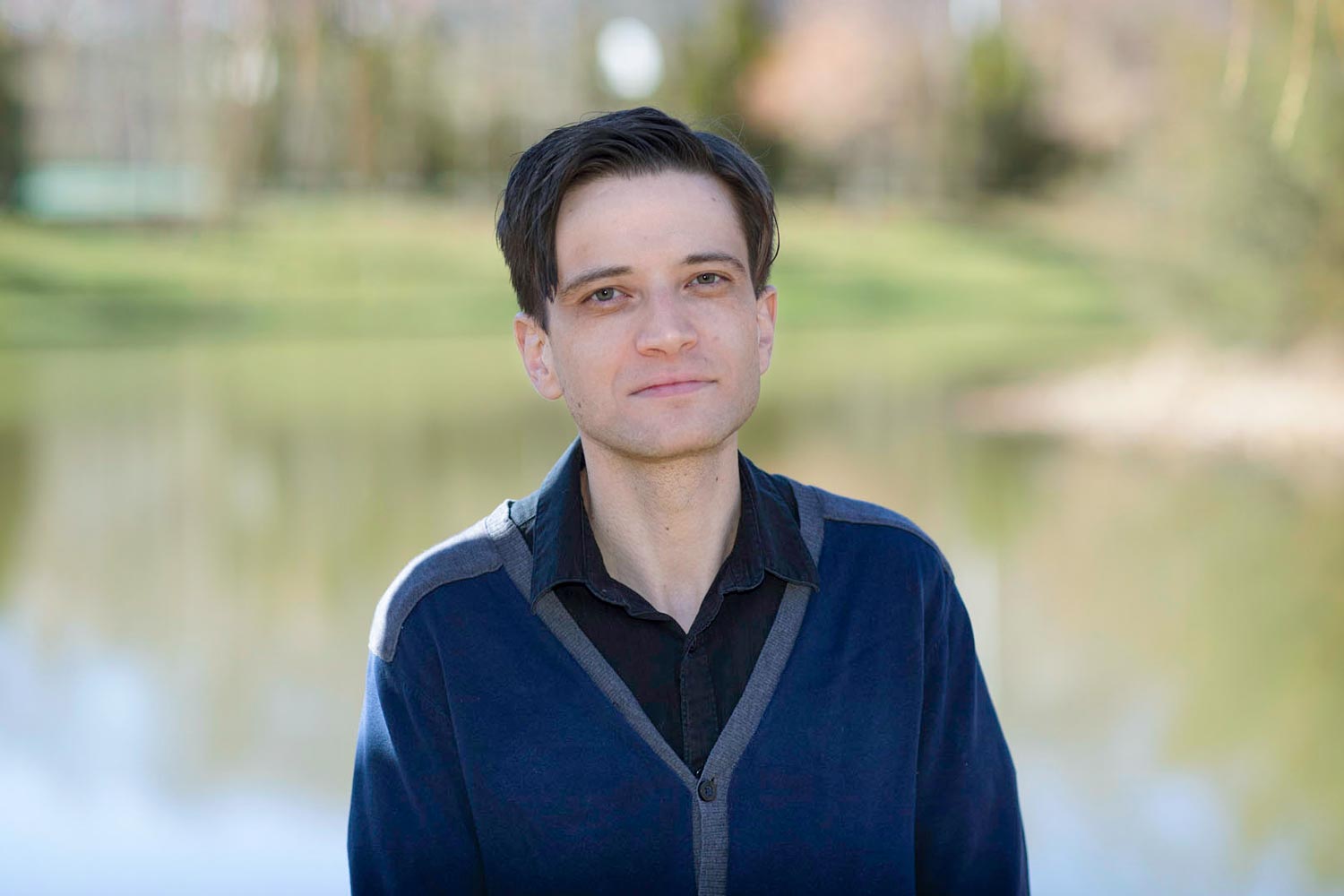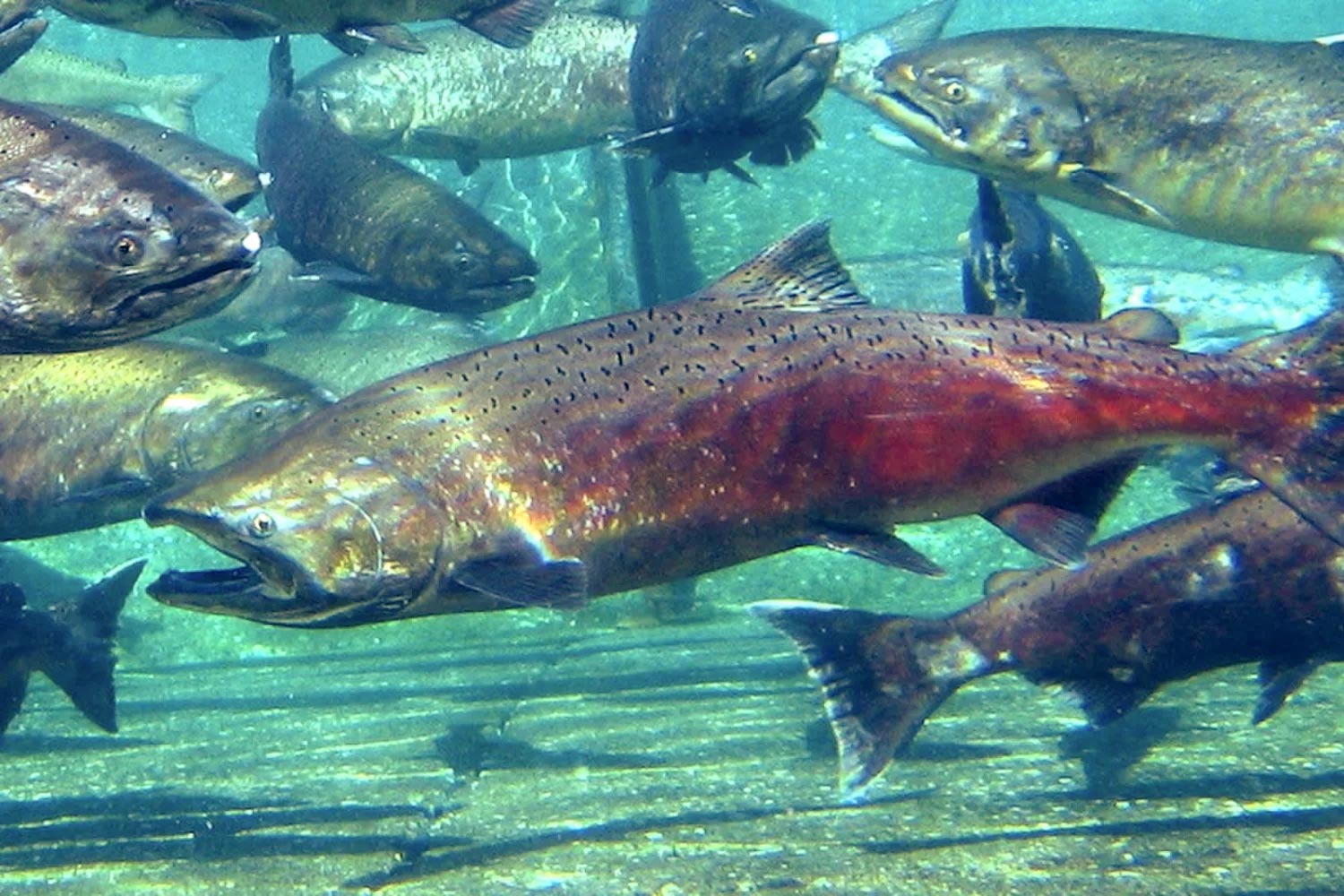A University of Virginia music graduate student and composer from the Pacific northwest is working with a fisheries scientist to improve the way migrating salmon are tracked.
It turns out that sound can play a key role in understanding the fishes’ movements, using ecological data as the source. UVA graduate student Ben Luca Robertson, and his colleagues at three other institutions, have turned chemical data from salmon migrations into sound, helping people “hear” when the fish move from one river to another toward the ocean. The approach – called sonification – creates an engaging “audio display” to help even untrained listeners interpret large amounts of complex data.
The team presented its findings recently in the journal Heliyon.

Composer Ben Luca Robertson is using sonification to make sense of salmon migration patterns. (Photo by Dan Addison, University Communications)
As a result of human activities, salmon migration patterns are changing, and the behavior of young Chinook salmon in Idaho’s Snake River is rapidly evolving. To understand the changes, researchers need to study their movement patterns in detail, over large geographical areas and short time scales.
One way to track the movement of fish is by studying the chemistry of a balance and hearing organ in the head called an otolith. The fish’s movements are recorded as chemical signatures in the otolith throughout the fish’s life. The otolith record contains details about where the fish has been and how long it stayed there, but statistical tools don’t capture the nuances of movement timing. Visual analysis is too complex to interpret, so the researchers decided to take an audio approach, using sounds to represent movements from location to location over time.
Robertson’s role was to help design a sound synthesis application for sonifying the chemical signatures associated with the migrations.
“As a composer, I’m very interested in autonomous systems and the notion of re-embodiment,” he said. “This interest has led me to explore alternate tuning systems, which reflect specific phenomenological properties of sound. As traditional instrumentation cannot always accommodate these structures, my work often necessitates designing new instruments or technologies, and sonification is another tool for re-embodying alternate modalities in my own creative practice – in this case, data derived from biological systems.”
Robertson collaborated on the project with a former music professor at Eastern Washington University, Jonathan Middleton, and with the study’s lead author, Jens Hegg, who was at the time of the study a water resources Ph.D. student at the University of Idaho.
The team tested their approach by presenting the sounds in a survey to untrained listeners. They asked the listeners to identify movements, with an increasing number of fish. The results showed that the listeners were most sensitive to changes in pitch and tone and that they performed better as a group than individually.
The researchers also presented the sonifications with and without data visualizations, such as graphs. The listeners identified movements better without those visual aids, suggesting that sound alone is a more effective way to convey salmon migration data.
The results, Robertson said, suggest that sonification could be a useful way to process data for crowdsourcing. The approach might also translate to other areas of ecology as the researchers work on refining their approach and creating new sound tools to explore the detailed data from otoliths.
As to why he, as a composer, got involved with the project, Robertson said, “I was born and raised in the inland Pacific Northwest. Both the landscape and wildlife of the region are very close to my heart and, in turn, my music.”
Media Contact
Article Information
February 27, 2018
/content/data-listening-offers-new-way-track-salmon-migration

